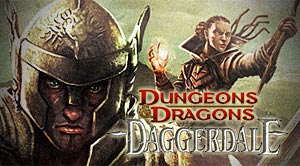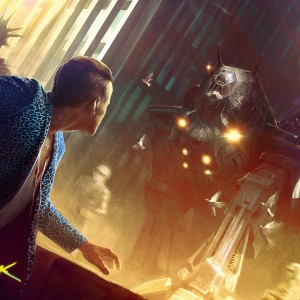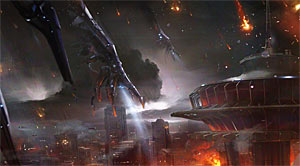Hello. My name is Matt. And I’m a geek.
(crickets)
Shocker, I know.
However, in the interests of full disclosure, I feel I should point out that, although my passport as been stamped at many of the most popular travel spots of the geek underworld, I have never been a Dungeons And Dragons fanboy. Ever. There’s just something about sitting in your basement, with a few of your closest fellow D&D nerds, rolling six-sided dice and screaming at your mom to make you and your friends a grilled-cheese sandwich that’s never appealed to me. In my eyes, playing D&D was just a way of adding +10 nerd to your character sheet and, in my high school days, I was already way overpowered as far as that particular stat went.
Oddly enough, my aversion to the Dungeons And Dragons brand did not extend to the video game world. My gradual entry into the universe created by Gary Gygax and Dave Arneson started way back in 1988 (Yeah , I’m older than dirt.) with the release of Pools Of Radiance and Heroes Of The Lance, the former taking place in The Forgotten Realms campaign and the later in the Dragonlance setting. From that point on I was hooked. I devoured every single video game that bore the D&D logo on its cover.
Champions Of Krynn (1990), the ageless Eye Of The Beholder (1990) and it’s two sequels, I was one of the first in line to play the very first Neverwinter Nights (1991), that game being one of the ancestors of the current MMORPG craze. And of course, no list of Dungeons And Dragons games is complete without at least one mention of the classic Baldur’s Gate (1998), which began my long association with Bioware produced games.
But those are the jewels in the D&D gaming crown. The rubies and emeralds. Unfortunately, as with any franchise that’s been around long enough to spawn dozens of games, Dungeons And Dragons produced quite a few cubic zirconias in its time. Luckily, your humble reviewer is here to tell whether or not the latest entry in the D&D cannon is a worthwhile investment or just another quick cash-in on the D&D brand.
This is a review of Dungeons And Dragons: Daggerdale. Available for PC, Xbox 360 and PS3. For review purposes, the PC version was used.
Get ready to dodge some magic missiles, grab yourself a decent Vorpal blade…it’s time to get ourselves lost in The Forgotten Realms! (The what?) The Forgotten Realms! (The what realms?) The Forgotten…oh, I see what you did there. Nice try but I rolled a critical on my sarcasm save.
The Story:
Like nearly all RPGs in the history of ever, Daggerdale revolves around a plucky band of heroes being recruited by a Wise Sage™ type character. There’s a Big Bad™ that needs defeating and your little band of adventurers are the only ones capable of accomplishing this deed. Because, you know, they’re heroic and such. This information is dumped on the player with very little fanfare in the game’s opening movie, which is presented in a nice enough slideshow of painted images with some minor animations thrown in. The cinematics in Daggerdale aren’t Blizzard quality but they get the job done.
You are then tasked with choosing your player character. The game allows you to pick between a Halfing Wizard, an Elven Rogue, a Human Fighter or a Dwarven Cleric. There are countless other classes from the D&D cannon that could have been included but the choices presented do a nice job of filling out the usual RPG staples of damage dealer, utility character, tank and healer. You can name your character whatever you choose but I decided to keep the name the game auto-generated for me: Horgrim Chandler! Horgrim, I decided , was a Viking that liked to hang out at Central Perk with Monica, Ross and the others.
In any case, your chosen adventurer is then sent to the Mines of Tethyamar, where the game’s villain, Rezlus the Zhentarim, is using a magical construct called The Tower Of The Void to…do whatever it is guys named Rezlus do. Seriously, with a name like that, he’s not gonna set up a lemonade stand at the bottom of something called The Tower Of The Void. Unless it’s really evil lemonade.
That pretty much covers Daggerdale’s overarching plotline. It’s a dungeon crawler, so you can’t really expect Shakespeare. NPCs don’t vocally contribute anything much more meaningful to the plot. The voice acting in Daggerdale is sparse, reserved mostly for important moments, with most NPCs doing nothing but grunt and wave frantically while text scrolls across the screen.
To sum up:
There’s a bad guy. He’s in this mine. Go get your murder on.
It’s not over! Read the gameplay, presentation and verdict on the next page…
- Yell! Rating (x/5 Skulls):
- [rating:1]
- Published by:
- Atari
- Developed by:
- Atari
- Year Released:
- May 25, 2011
- Also Available On:
- PlayStation 3, Xbox 360
- Genre:
- Action Role-Playing
- Official URL:
- Dungeons & Dragons: Daggerdale














Stay Connected